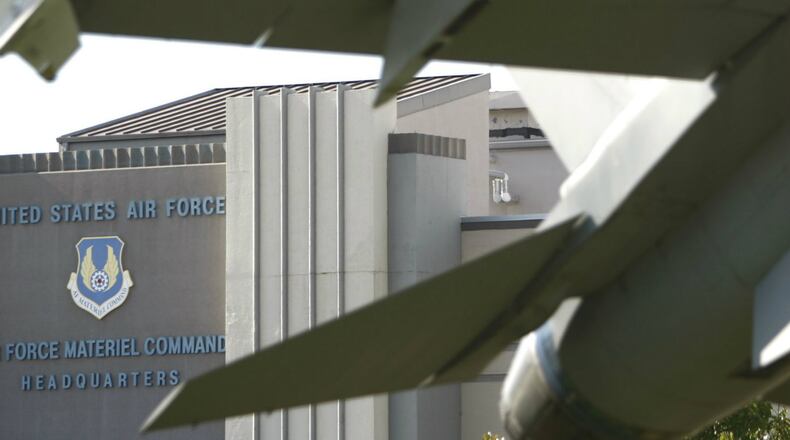Military coverage
We have reporters in Washington and in the Miami Valley dedicated to bringing you the latest national security and military news. Read more military news and stories related to Wright-Patterson Air Force Base at mydaytondailynews.com/s/military/
Another round of military base closings has hit a dead end.
A Senate panel on Tuesday approved legislation rejecting the Defense Department’s request to close installations and facilities in the United States that are no longer needed as the military branches cut the number of troops in uniform.
The House Armed Services Committee last week also said no to more base closings, and even took the additional step of adding a provision barring the Pentagon from even planning for another round.
In the last base closure round in 2005, Wright-Patterson Air Force Base, Ohio’s largest single site employer, gained about 1,200 jobs and the 711th Human Performance Wing.
That BRAC round also stripped the Springfield Air National Guard Base of its F-16 fighter jets and mission training pilots. Instead it now remotely pilots unmanned Predators and has a mission with the National Air and Space Intelligence Center.
“The military has so many unneeded bases that legislators know districts might suffer major loses if there was another BRAC round,” said Loren B. Thompson, a defense analyst with the Lexington Institute in Arlington, Va. “The specter of base closure rallies the possibility many members of Congress would see jobs and votes go away from their districts.”
In 2005 at Wright-Patt, the reorganization, among other moves, forced the relocation of the Air Force School of Aerospace Medicine to Wright-Patterson from Brooks City-Base, Texas, and Air Force Research Laboratory sensors work from Rome, N.Y., and Hanscom Air Force Base, Mass. The process was conducted by the Defense Base Closure and Realignment Commission.
“Wright-Patterson may be the single most important base in the entire Air Force system,” Thompson said. “It could lose a few jobs in base alignment, but it’s just as likely to gain jobs and missions. There’s no danger at all that Wright-Patterson would be closed in any base closure round. Wright-Patterson is the nerve center for many of the Air Force’s most important functions,” such as research acquisition and aircraft testing, he said. “It would be hugely expensive to try to move those functions to other places.”
Michael Gessel, vice president of federal programs at the Dayton Development Coalition, said the outcome of a BRAC is unknown, although Wright-Patterson has a “slight probability” the base would receive new jobs and missions rather than lose both. In the last publicly released base figures, Wright-Patterson had more than 29,000 military and civilian jobs.
A BRAC round in 2017 “is still very much a possibility,” Gessel said. The base also faces significant ongoing cuts from sequestration, he noted.
Last week, U.S. Rep. Mike Turner, R-Dayton and a House Armed Services Committee member, voted against another round of base closures, according to his spokesman, Thomas Crosson.
”Mr. Turner believes that now is not the time for a BRAC, but our community must continue to work together to be prepared if one does come about,” Crosson said in an email.
Air Force leaders asked for another round of base closure as hundreds of aircraft have left the fleet. Secretary of the Air Force Michael Donley has said the Air Force has 20 percent excess infrastructure.
“Excess bases is just one of many ways in which the military is wasting money, but those bases have powerful political support so we’re going to need some forcing functions to get another round of base closures,” Thompson said.
The House and Senate refusals effectively ensure that a final defense policy bill approved by Congress for the 2014 fiscal year won’t give the department permission to close excess bases even as lawmakers clamor for ways to cut the federal deficit.
Defense Department leaders have argued the troop drawdown will leave them with more installations than they need. The money saved by closing unused facilities can be spent on training and other operations.
The automatic cuts, known as sequestration in Washington speak, kicked in March 1 and are the result of Congress’ failure to trim the deficit by $1.2 trillion over a decade.
The Pentagon must reduce its 2013 budget by roughly $41 billion by the end of the fiscal year on Sept. 30. The reductions have forced the military to furlough hundreds of thousands of civilian workers and scale back essential training and maintenance programs.
If sequestration remains in effect, the Pentagon likely will have to cut $52 billion from its 2014 budget to meet the numbers dictated by the law, Defense Secretary Chuck Hagel told the Senate Appropriations defense subcommittee Tuesday.
“And, if there are no changes, continued sequestration will result in roughly $500 billion in additional reductions to defense spending over the next ten years,” Hagel said.
Separately, the military also has to absorb a $487 billion reduction in defense spending over the next 10 years mandated by the Budget Control Act passed in 2011.
The Associated Press contributed to this story.
About the Author
